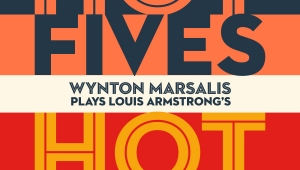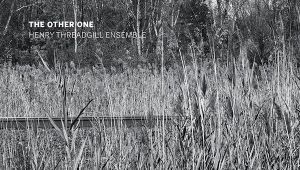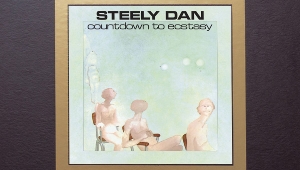| Columns Retired Columns & Blogs |
Recording of January 2016: Verdi: Aida

Verdi: Aida
Anja Harteros, Aida; Eleonora Buratto, High Priestess; Jonas Kaufmann, Radames; Ekaterina Semenchuk, Amneris; Ludovic Tézier, Amonasro; Erwin Schrott, Ramfis; Marco Spotti, The King; Chorus & Orchestra of Santa Cecilia Academy Rome, Sir Antonio Pappano
Warner Classics 0825646106639 (3 CDs). 2015. Stephen Johns, prod.; Luca Padovano, Giancarlo Ianucci, Claudio Emili, Marco Emili, engs. DDD. TT: 2:26:45
Performance ****½
Sonics ****½
Anja Harteros, Aida; Eleonora Buratto, High Priestess; Jonas Kaufmann, Radames; Ekaterina Semenchuk, Amneris; Ludovic Tézier, Amonasro; Erwin Schrott, Ramfis; Marco Spotti, The King; Chorus & Orchestra of Santa Cecilia Academy Rome, Sir Antonio Pappano
Warner Classics 0825646106639 (3 CDs). 2015. Stephen Johns, prod.; Luca Padovano, Giancarlo Ianucci, Claudio Emili, Marco Emili, engs. DDD. TT: 2:26:45
Performance ****½
Sonics ****½
It has been a long time since we've had a big-budget, studio recording of Aida; in fact, the last was from 2001, and it was awful—conductor Nikolaus Harnoncourt's attempt to present an intimate (read: "miniaturized") reading of the score, a sort of period-instrument approach with small-voiced singers. In all, Aida has been taken on nearly 30 studio outings (the first was in 1928), and there are "private" and video versions. This is one of the best, with what might arguably be the finest cast one can assemble today.
One might also argue that recording Aida without an Italian in an important role is heresy, but if that were the case, many others would also be burnt at the stake: Leontyne Price, Jon Vickers, and Rita Gorr under Georg Solti; Maria Callas and Richard Tucker; not to mention Zinka Milanov, Jussi Björling, and Leonard Warren. Granted, Renata Tebaldi and Carlo Bergonzi under Herbert von Karajan do offer a type of plush singing, filled with morbidezza, and Karajan is at his most extraordinary. (Those who recall John Culshaw will own that spectacularly fidgeted-with recording, which was/is billed as an attempt to re-create how it would be heard onstage. The orchestra remained too loud, the Temple and Tomb Scenes added reverb, etc. It now seems a bit too in-your-face for my taste.)
This new recording was made in February 2015, a few days before a concert performance in Rome's Auditorium Parco della Musica, designed by Renzo Piano and opened in 2002. Famous for its superb acoustical warmth, it is considered the finest auditorium in Italy. The sound is utterly natural, and conductor, players, singers, and engineers have paid diligent attention to Verdi's dynamic markings without any artificial fiddling. Pianissimi are truly quiet—the very opening of the opera is present but absolutely hushed, with Verdi's divided strings clear and warm. When the forte comes (at 1:40), it blows up neither your head nor your speakers. The offstage prayers in the Nile Scene are truly distant, and add to the gloriously still atmosphere of those first few, tranquil moments before Aida's agitated entrance; in Act IV, the Priests and Ramfis are supposed to be in some sort of subterranean chamber, and are thusly recorded. These and Verdi's other written 3D effects (eg, the onstage brass for the Triumphal Scene) and massed moments are re-created just as effectively as are the intimate ones. Despite the very effective big set pieces, we are presented here with a tender, doomed love story; rarely has the hushed Tomb Scene sounded so reflectively sad, both vocally and orchestrally.
Antonio Pappano's insistence on legato in both singing and playing (and the Santa Cecilia Orchestra and Chorus have this music with their breakfasts) trump the non-Italianness of the cast. Aside from Ekaterina Semenchuk as Amneris, none of the principals had yet sung his or her role onstage when this was taped. When we first meet Semenchuk's Amneris, she sings sweetly and gently to Radames, dipping into chest voice only in the trio in the first scene in which Aida and Radames realize they may be found out and Amneris begins to let loose her anger. Each vocal line is understandable, the feelings rather than the volume are paramount, and Amneris becomes dangerous. Her Judgment Scene is very much of the grand school of Cossotto and Barbieri: exciting.
Anja Harteros, a German soprano who sings a great deal of Verdi, has the style down perfectly but is somewhat lacking the breadth needed in the middle of the voice. She is, however, a fine singing actress, and at first a timid Aida: a woman in love, a victim of her fate. The voice is attractive, even if it does occasionally let her down—it loses its center when she sings quietly, and the high C in "O patria mia," while forgivably not sung softly, is a hair flat. But she reacts superbly to each situation around her: her reading is a success. Her Radames, Jonas Kaufmann, is close to faultless. With Pappano's help, he sings "Celeste Aida" as if in a dream, sliding perfectly up to the Fs softly on the second syllable of "AiDA," as written, letting loose with big, virile sounds when he should, and closing the aria on the high B-flat softly—and then reins it in even further, as Verdi wanted. He is always involved and alert, both a warrior and a lover, and incapable of being boring. A cross between Vickers and Bergonzi, I'd say, and it doesn't get any better.
Ludovic Tézier's Amonasro is well drawn and handsomely sung, if a bit soft-edged; he's good enough to scare Aida in Act III. Erwin Schrott's Ramfis does not quite bully enough; Marco Spotti, as the King, sings with authority. Eleanora Buratto's Priestess is ravishing. And the Santa Cecilia forces could not be bettered. A stunning achievement.—Robert Levine
- Log in or register to post comments




































